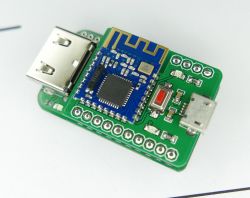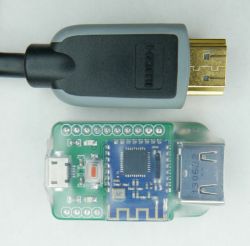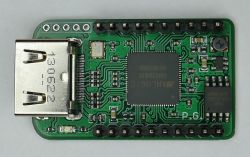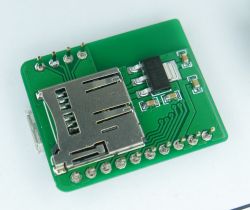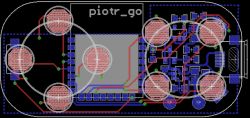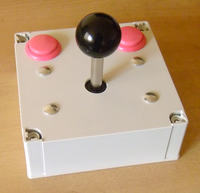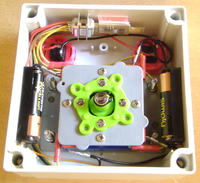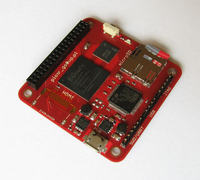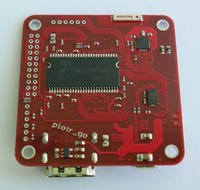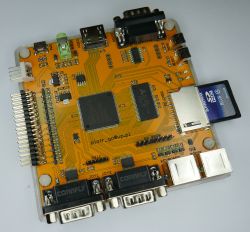FAQ
TL;DR: 24 × 40 mm board integrates an Anlogic FPGA with 8 MB SDRAM and boots NES/Amiga; parts cost ≈ PLN 200; “HDMI licence fees kill margins” [Elektroda, piotr_go, #17812584; #17813694; #17813493].
Why it matters: It proves that sub-$10 Chinese FPGAs can power pocket-sized retro consoles without external RAM.
Quick Facts
• Size: 24 mm × 40 mm (960 mm²) [Elektroda, piotr_go, post #17812584]
• Memory: 8 MB 32-bit SDRAM integrated on FPGA die [Elektroda, piotr_go, post #17812584]
• Boot storage: 16 MB SPI flash + microSD for updates [Elektroda, piotr_go, post #17812584]
• Bill of materials: ≈ PLN 200 plus < $2 CC2541 radio module [Elektroda, piotr_go, post #17813694]
• Dev-tool size: Tang Dynasty IDE 150 MB (≈ 97 % smaller than 6 GB Vivado) [Elektroda, piotr_go, #17818230; Xilinx, 2023]
Which retro systems already run on the prototype?
Stable cores include NES and Amiga 600; C64 is planned next. Test cores for other 8-bit machines also boot [Elektroda, piotr_go, post #17812584]
How fast is the Amiga core and does it support AGA?
Current build matches Amiga 600 speed; designer expects 68030 at ~40 MHz with AGA once optimized [Elektroda, piotr_go, post #17814747]
Can the board emulate PlayStation or Nintendo 64?
No. The FPGA is “too small and too slow” for PSX or N64 complexity [Elektroda, piotr_go, post #17814291]
What does the hardware cost and which parts are scarce?
PCB + stencil costs ≈ PLN 200; CC2541 radio module is under $2; BGA version of the FPGA was <$10, but the QFN device used here is hard to find and may run < $5 in China [Elektroda, piotr_go, #17813694; #17818046].
Why use a Chinese Anlogic FPGA instead of a Xilinx Spartan?
It combines SDRAM on-die, fits a small QFN package (no BGA), and lowers cost/size simultaneously [Elektroda, piotr_go, post #17817424]
Is documentation and development software available?
Datasheets exist only in Chinese. The free Tang Dynasty IDE is a 150 MB download—much lighter than mainstream FPGA suites [Elektroda, piotr_go, #17814291; #17818230].
Will HDMI or DisplayPort output be offered?
Unlikely. HDMI licence fees are high and negate profit; DisplayPort is royalty-free but needs higher bit-rates than the small FPGA tolerates [Elektroda, piotr_go, #17813493; #17814291].
Can I connect a wired USB or PS/2 keyboard?
Yes, on the newer carrier board with four USB host ports; firmware support is in progress [Elektroda, piotr_go, #17847680; #18016142].
Is the board for sale, and what about a C64 version price?
No commercial release is planned due to licensing costs and Polish bureaucracy (VAT, ZUS). Therefore no fixed price for the C64 build exists [Elektroda, piotr_go, #17813493; #18306973].
Which wireless modules does the joystick use?
New pads and joysticks carry reprogrammed CC2541 modules (~$2); earlier prototypes used nRF24L01+ plus a microcontroller [Elektroda, piotr_go, post #17814291]
How do I update FPGA cores and ROMs from microSD?
- Copy the .bin core and game ROMs to the microSD card.
- Insert the card; the Cortex-M0 bootloader detects new files and flashes the 16 MB SPI memory.
- Reboot; the selected core auto-loads [Elektroda, piotr_go, post #17812584]
What current limitations or bugs should I expect?
Amiga core still shows sprite glitches; large 3-D consoles cannot fit; HDMI support is intentionally omitted due to cost [Elektroda, piotr_go, #17812584; #17813493].
Could the design drive an LCD instead of HDMI?
Yes. The creator already attached a parallel-RGB LCD; implementing 4-lane MIPI-DSI would be harder but feasible with additional logic [Elektroda, piotr_go, post #18306798]
How is the board powered?
Early prototypes used 5 V pins; the latest carrier adds USB-C power input for up to 3 A, easing handheld builds [Elektroda, piotr_go, post #18016142]
